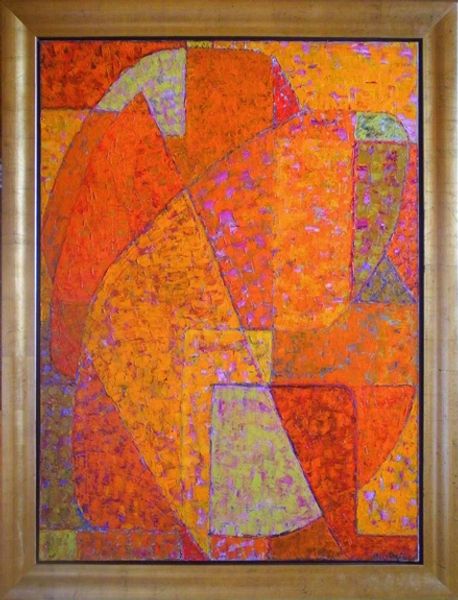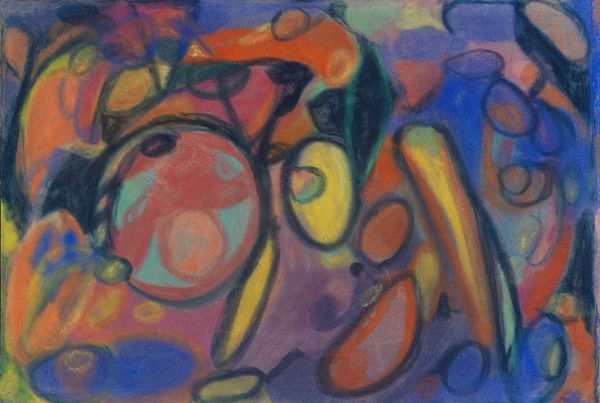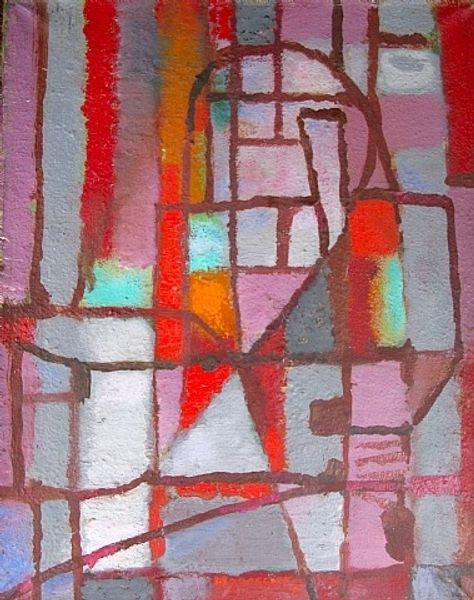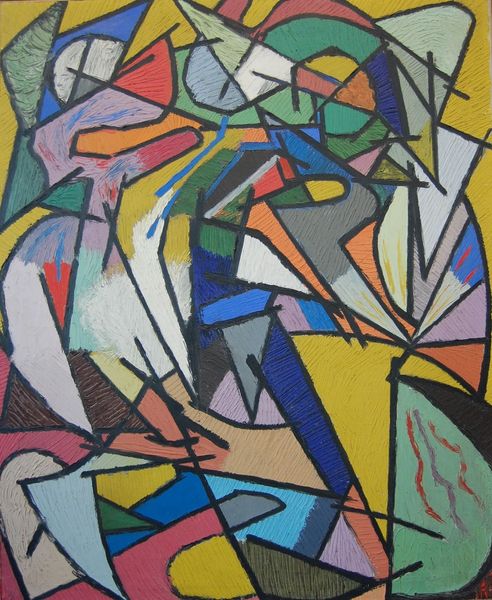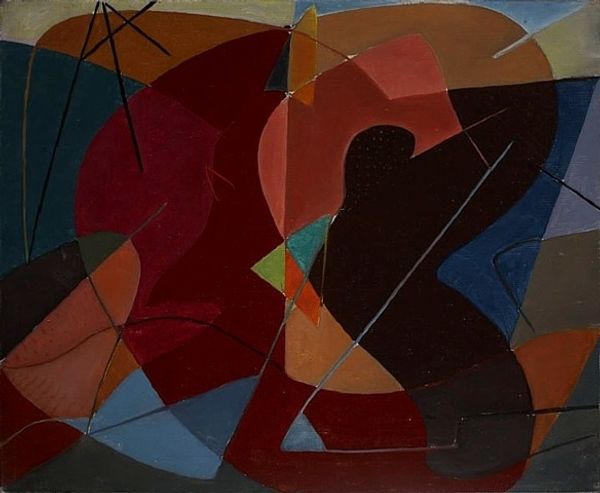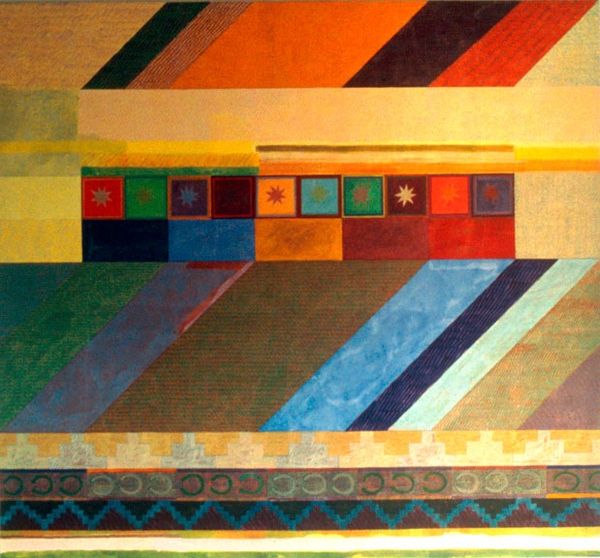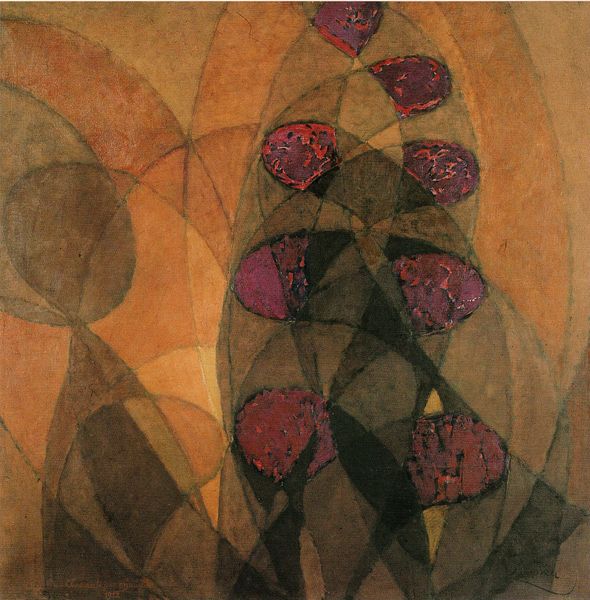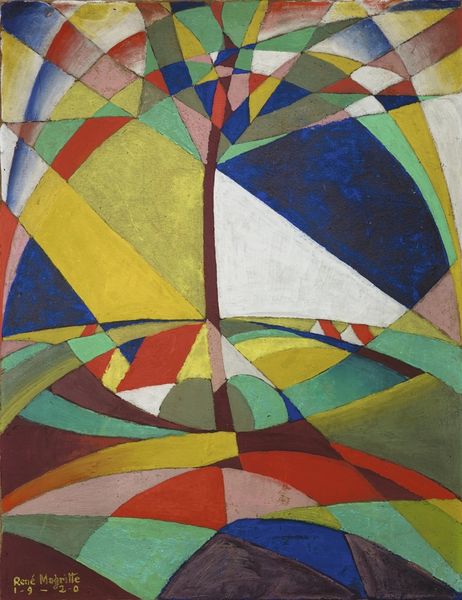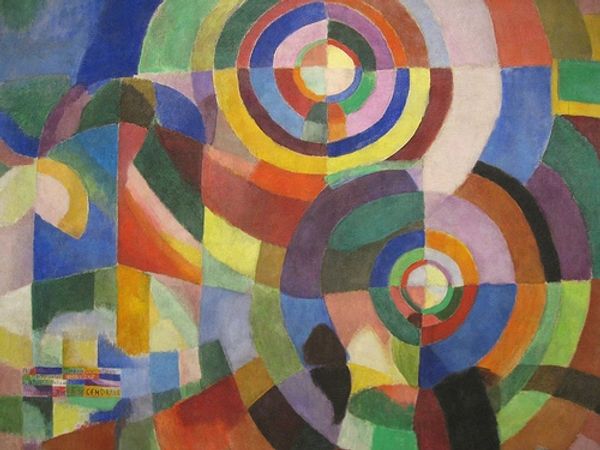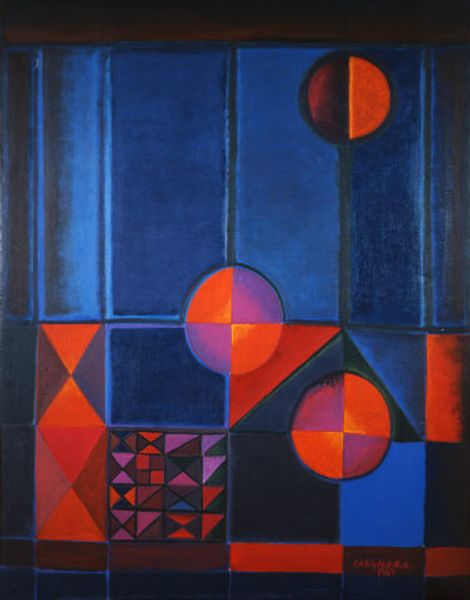
acrylic-paint
#
abstract-expressionism
#
abstract expressionism
#
acrylic-paint
#
oil painting
#
geometric
#
abstraction
Copyright: Frederick Hammersley,Fair Use
Editor: "Chinese Toys," painted in 1954 by Frederick Hammersley using acrylic paint… At first glance, this feels almost like a dreamscape. What story do you think Hammersley is trying to tell with these shapes and colors? Curator: A dreamscape is a perfect description. It's as though Hammersley has plucked images from his subconscious and arranged them in this playful, almost surreal composition. It reminds me a bit of Klee, wouldn’t you say? Those seemingly simple forms—circles, triangles, a multi-colored pinwheel—they buzz with potential narratives, just out of reach. What does the brown color palette evoke in you? Editor: It's definitely grounding. It makes the other shapes seem almost like…memories floating on a blank canvas, while keeping everything rather contained, nothing screams for attention. Curator: Exactly! I think that grounding lets our minds wander more freely. Look at that winding line near the bottom – a suggestion of movement, like a ribbon unfurling or a child's doodle come to life. For me, that hints at spontaneity. A dance across the picture plane, even within a rather subdued color story. Does that alter how you perceive the work? Editor: Yes, it adds a sense of rhythm, or music even! It's no longer static, but almost whimsical. Curator: That's the magic of abstract art, isn't it? It doesn’t tell you what to see, it invites you to feel, to interpret, and ultimately, to find your own meaning within the shapes and colors. Editor: It’s fascinating how the title alone nudges us to perceive it a certain way, yet the painting itself has such a universal quality to it. I am curious to see how other abstract painters are pushing these concepts forward. Curator: Indeed, it's a visual playground that continues to inspire new games and explorations, don’t you agree?
Comments
No comments
Be the first to comment and join the conversation on the ultimate creative platform.
